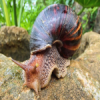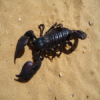Taxonomy is a branch of biology concerned with the classification of organisms into groups such as Kingdom, Phylum, Class etc.
History of Taxonomy
Over the ages many people have set out to categorise the world around us for various reasons. Plants, and in particularly herbs, were categorised by their healing properties and this classification (as set out by a 2nd century physician Dioscorides in ‘De Materia Medica’) was used by doctors for many years. For biologists though it was the work of Swedish botanist, zoologist and physician Carl Linnaeus (1707 – 1778) that created modern taxonomy. His structure for naming and grouping all life on the planet was so straight forward; it is the bases for the modern taxonomy system.
For thousands of years humans looked around at living organisms and found that they could place them into one of two groups, either flora or fauna. This was the original bases for classification, as set out by Linnaeus, with the animal kingdom (Kingdom Animalia) and the plant kingdom (Kingdom Plantae) at the head of the hierarchical system. This seemed adequate until our understanding of unicellular organisms made classification into the two kingdoms difficult at best. In 1969 R.H. Whittaker, a professor of biology in Ecology and Systematics at Cornell university wrote a paper ‘New Concepts of Kingdoms of Organisms – Evolutionary relations are better represented by new classifications than by the traditional two kingdoms’ (see Whittaker_1969). This paper has been accredited to bringing us the five Kingdom structure we now use today.
Modern Taxonomy
Taxonomy is the process of grouping living things, which was originally based on certain physical characteristics but now (due to scientific advances) includes genetic make-up. Today one of the goals of systematic biologists is to trace the evolutionary path of all living things. This way of tracing organisms lineages through evolution is known as the Phylogeny of organisms. However as the process of taxonomy was started before Darwin’s theory of common descent; animals were grouped by their characteristics. Now taxonomy requires some of these original classifications to be adapted to follow their evolutionary paths and this process causes some controversy with not all groups of scientist using the same structures. American biologists use a six Kingdom structure where as the UK and most other countries use a five Kingdom structure.
Now any animal should be categorised by at least the following seven hierarchical groups (known as Taxa (plural) or Taxon (singular) with the possibility of being defined by up to 31 recognised groups (these include super kingdom, superspecies, subspecies etc). The main seven used are Kingdom, Phylum, Class, Order, Family, Genus and finally Species*.
Zoologists have named more than 1.5 million species of animal and this number is increasing all the time. It is estimated this is less than 20% of all animals currently alive and less than 1% of animals that have ever existed on the planet.1
*Some helpful mnemonic to remember the order of taxonomy of animals are:-
Kevin’s Poor Cow Only Feels Good Sometimes.
King Phillip Cried Out For Good Soup.
Plants are categorised by 6 hierarchical groups (known as Taxa (plural) or Taxon (singular). The groups are as follows, Kingdom, Divisions, Class, Family, Genus and Species.
Ref: 1. Integrated Principles Of Zoology, Eleventh Edition, Hickman Roberts and Larson. pg196








